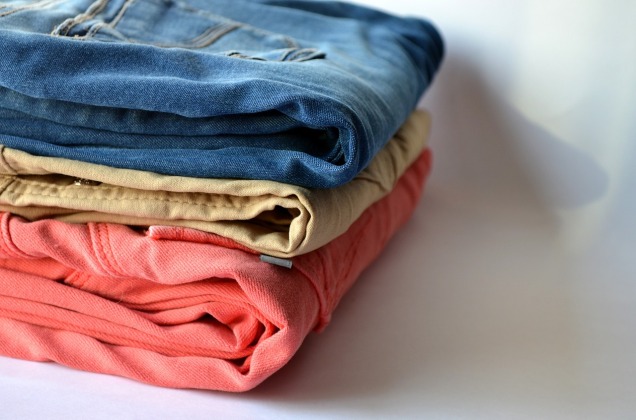
We all have a favorite method for storing clothes in drawers. Some of us fold precisely, some of us roll and some of us are just fine with a random tangle as long as all the things with arms are in one drawer and the things with legs are in another drawer. When we’re on the job with a client, we fold clothes or linens their way. Myself, I alternate between roll and fold. But the new year always makes me itchy to try new things, so I decided to look into the whole Konmari folding thing.
What is Konmari? It’s the name of the organizing methods of international superstar organizing phenomenon, Marie Kondo, the author of The Life-Changing Magic of Tidying Up (2011). For her true believers, it’s not a book, it’s the gospel of an organizing religion—ritual decluttering that enhances the quality of their lives. In the interest of learning something new that might help our move management team do our job better, I have tried to read the book. Multiple times. True confession, I have not succeeded. It’s a little strident for me.
At our NASMM conference a couple years ago, one of the presenters demonstrated the Konmari folding technique and while I was not an immediate convert, it stuck in my brain. Particularly the visual image of a t-shirt folded and placed vertically in the center of the table. It was still there, as she placed it, at the end of the hour. It wasn’t hard to find videos and diagrams to refresh my memory on Konmari folding. The internet is full of them.
In a shirt folding video, Marie Kondo lays the shirt flat, caresses it and thanks it for its service before folding it gently into a rectangle. With a cynical sigh, I emptied my shirt drawer and laid the first tee-shirt flat on the bed. As I smoothed it flat and folded it into the neat rectangle and folded it a couple more times until it became a tidy vertical-standing, gravity-defying parcel, I realized that shirt that made me happy every time I wore it because I loved the color and the cut. In spite of myself, eye rolls aside, I had thanked that teal blue raglan sleeve tee. I knew it had earned a spot in my life and my drawer.
I worked my way through the short sleeves, long sleeves, sweaters, sweatshirts, things with legs, things to wear on feet, unmentionables and cozy things to burrow under blankets in. That process of carefully flattening, folding into neat rectangles and lining up in the drawers was peculiarly enjoyable and ultimately liberating. For all the clothes I loved, there were a fair number that I tolerated; garments I kept because I spent money on them and not because they made me happy when I wore them. By fair number, I mean 6 large bags full of clothing that I sent on to either textile recycle because it was ratty and tatty or donation because it was in nearly new condition.
Dropping those 6 bags at their destinations felt marvelous. Fitting all my summer and winter clothing into my drawers and closet so nothing offseason was stored in the attic felt even better. My hope is that this exercise will keep me from purchasing things that are just meh; things I don’t really need and things that won’t add value to my wardrobe.
There are many videos out there, some featuring Marie Kondo and other featuring devotees demonstrating her methods. This book trailer for her second book, Spark Joy (2016) made the folding process super clear for me. And the video of her folding awkward clothing at New York’s 92stY is funny and charming.
While it’s not for everyone, you might be just as surprised as I was to find out that a simple change in how I folded my clothing could make me happy every time I open a drawer and find clothes I am fond of standing at attention, ready to lend me another day of service.

That sparked my curiosity! Thanks for sharing.